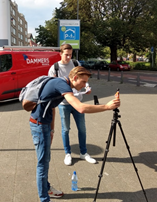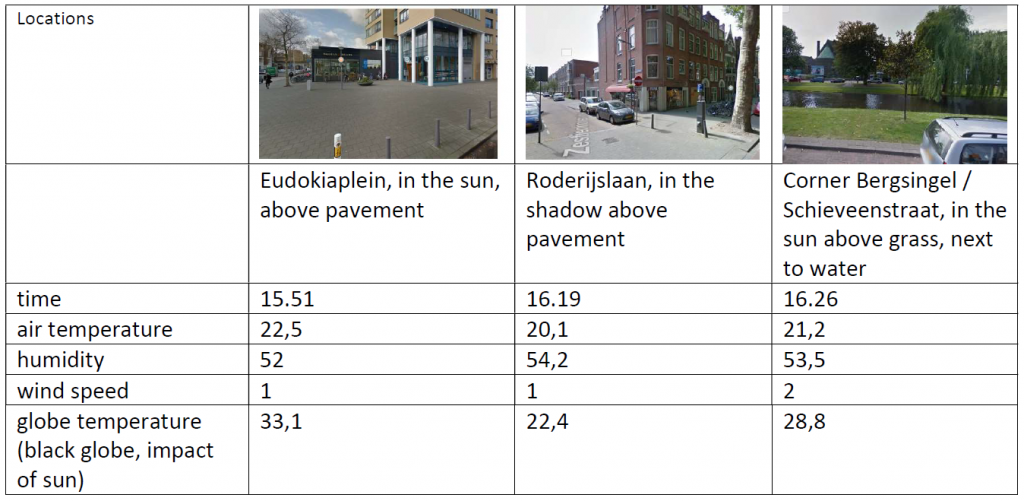During the introduction week at Rotterdam University of Applied Sciences with students Watermanagement, we tested the Kestrel heat measurement tools for the IMPETUS project. We assessed the thermal experience of pedestrians moving through the Liskwartier district in Rotterdam. Thermal walks can answer their questions such as: How hot is a shopping street, a residential area, a specific walking route through the city, or a station area? Which adjustments are needed to create cool spaces? Which factors determine whether the outdoor space is hot or cool and which of these factors can be included in a heat-resilient design? The first week of September was not as hot as it was this summer period, but we were able to measure the thermal situation at four different locations: in a paved urban square, in a shady park, in a green park in the sun, under a street tree, and in a paved sunlit urban street environment. During a thermal walk, the participants of the walk visit several locations in a specific area and investigate the thermal situation at these locations based on meteorological measurements and questionnaires. We measured air temperature, humidity, and wind speed. The impact of the sun on a black globe resulted in the globe temperature, the effect of the wind resulted in the chill factor temperature, the inclusion of the humidity resulted in HEAT index, and the Wet Bulb Globe Temperature could be measured, although this is applicable mainly in very hot or cold extremes. Besides the measurements, several questions were answered about the perception of the heat at that particular location.



